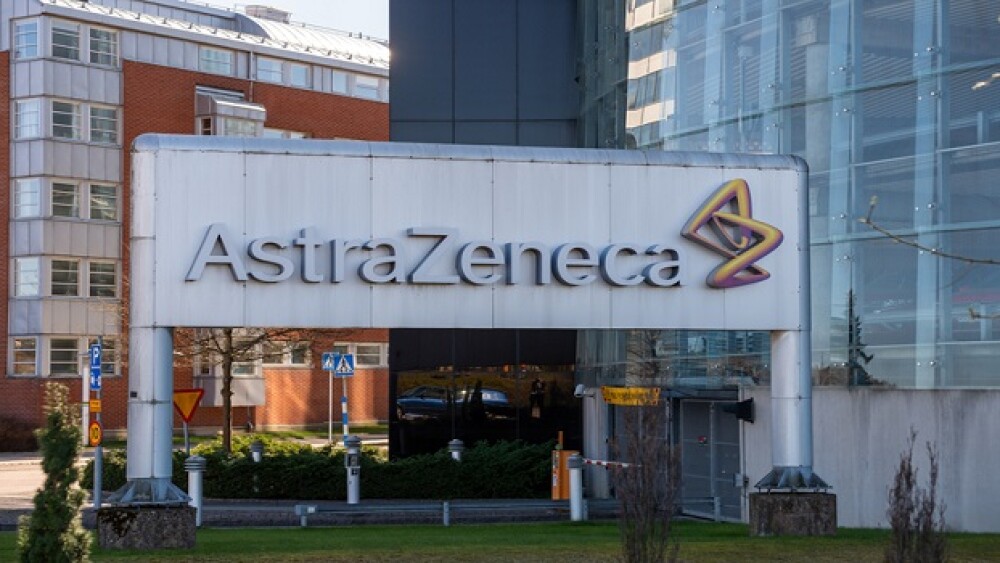Pliant Therapeutics, Inc. (Nasdaq: PLRX) today announced positive data from its expanded PLN-74809 Phase 1b proof-of-mechanism trial.
At all dose levels, PLN-74809 demonstrated durable pSmad suppression relative to placebo
at 6 hours and 24 hours
TGF-β suppression of up to 92% and 76% from baseline at 6 and 24 hours, respectively
PLN-74809 was well tolerated with no serious or severe adverse events
SOUTH SAN FRANCISCO, Calif., Feb. 28, 2022 (GLOBE NEWSWIRE) -- Pliant Therapeutics, Inc. (Nasdaq: PLRX) today announced positive data from its expanded PLN-74809 Phase 1b proof-of-mechanism trial. PLN-74809 demonstrated clear evidence of on-target biological activity in the lungs of healthy participants. Results showed that PLN-74809 inhibited TGF-β activation on Day 7 by up to 92% and 76% at 6- and 24-hours, respectively, following dosing. TGF-β has been shown to be a key mediator of the fibrosis pathway in idiopathic pulmonary fibrosis (IPF).
“Today’s data expand upon previous results providing evidence of PLN-74809’s ability to inhibit activation of TGF-β, a key molecular driver of fibrosis, in the lungs of healthy volunteers. We believe that by inhibiting this critical component, PLN-74809 may disrupt the fibrosis pathway and affect disease progression in patients with IPF,” said Éric Lefebvre, M.D., Chief Medical Officer at Pliant Therapeutics. “All of our preclinical and clinical proof-of-mechanism studies have been designed to build a comprehensive understanding of the potential antifibrotic activity of PLN-74809 across its full dose range. We are pleased to see that our research and data continue to provide evidence of a favorable safety, tolerability and pharmacokinetic profile. We believe these data provide additional de-risking of our ongoing Phase 2a INTEGRIS-IPF trial and future development programs.”
Expanded Phase 1b Proof of Mechanism Trial of PLN-74809
The randomized, double-blind, placebo-controlled Phase 1b trial evaluated PLN-74809’s ability to suppress TGF-β after 7 days of dosing in 36 healthy volunteers. The trial was conducted in two parts. Part 1 evaluated PLN-74809 at doses of 80 mg and 160 mg once-daily versus placebo and Part 2 evaluated PLN-74809 at a dose of 320 mg once-daily versus placebo. In addition to safety and pharmacokinetics, the trial evaluated PLN-74809’s ability to suppress TGF-β activation in the lungs of healthy volunteers as measured through relative pSmad2 levels in alveolar macrophages collected through bronchioalveolar lavage (BAL) at 6 hours and 24 hours after the last dose. pSmad2 is a marker of TGF-β activation. This trial further defines the relationship between plasma exposure of PLN-74809 and TGF-β inhibition in the lung and will guide dose selection in future trials.
All PLN-74809 treatment groups across Part 1 and Part 2 showed pSmad2 suppression relative to placebo at 6 hours and 24 hours (Figure 1).
Part 1
PLN-74809 dosed at 80 mg once-daily demonstrated mean pSmad2 reductions of 41% and 37% from baseline at 6 and 24 hours, respectively, with up to 76% reduction seen at 24 hours. PLN-74809 dosed at 160 mg once-daily demonstrated pSmad2 reductions of 58% and 53% from baseline at 6 and 24 hours, respectively, with up to 92% reduction seen at 6 hours. Statistical significance (p < 0.0001) was achieved at 24 hours for both the 80 mg and 160 mg doses when compared to placebo (Figure 2). Both the 80 mg and the 160 mg dose cohorts demonstrated exposures above the 50% target inhibitory concentration (IC50) of αvβ6 for 24 hours after dosing (Figure 3).
Part 2
PLN-74809 dosed at 320 mg once-daily demonstrated a mean pSmad2 reduction of 46% from baseline at 6 hours and a mean increase of 16% from baseline at 24 hours (Figure 4). The placebo group experienced a mean pSmad2 reduction of 8% from baseline at 6 hours and a mean increase of 151% from baseline at 24 hours. At both timepoints in the PLN-74809 arm, pSmad2 levels decreased relative to placebo (Figure 4). The Part 2 treated group showed exposures above IC50 of αvβ6 for 24 hours after dosing.
On Day 7 at 24 hours post dose, the placebo groups in both Part 1 and Part 2 showed mean pSmad2 increases of 74% and 151%, respectively. These increases in pSmad2 may have been associated with the 6 hour BAL procedure. All PLN-74809 treatment groups showed pSmad2 suppression relative to placebo at 24 hours, suggesting that PLN-74809 treatment was able to inhibit TGF-β activation triggered by BAL procedures (Figures 1, 4 and 5). Acute phase response following BAL procedures has been previously described in healthy volunteers and patients. 1,2
Favorable Safety Profile Demonstrated by PLN-74809
PLN-74809 was well-tolerated with mostly mild adverse events, and no severe adverse events. There was no dose relationship associated with adverse events, no serious adverse events (SAEs) and no treatment discontinuations due to adverse events.
About Pliant Therapeutics, Inc.
Pliant Therapeutics is a clinical stage biopharmaceutical company focused on discovering and developing novel therapies for the treatment of fibrosis. Pliant’s lead product candidate, PLN-74809, is an oral small molecule dual selective inhibitor of αvß6 and αvß1 integrins that is in development in the lead indications for the treatment of idiopathic pulmonary fibrosis, or IPF, and primary sclerosing cholangitis, or PSC. PLN-74809 has received Orphan Drug Designation from the U.S. Food and Drug Administration for both IPF and PSC. Pliant is currently conducting Phase 2a trials of PLN-74809 in the lead indications of IPF and PSC. Pliant has also developed PLN-1474, a small molecule selective inhibitor of αvß1 for the treatment of nonalcoholic steatohepatitis, or NASH with liver fibrosis, which Pliant has transferred to Novartis pursuant to our development partnership. In addition to clinical stage programs, Pliant currently has two preclinical programs targeting oncology and muscular dystrophies. For additional information about Pliant Therapeutics, visit www.pliantrx.com and follow us on Twitter, LinkedIn, Facebook and YouTube.
Forward-Looking Statements
Statements contained in this press release regarding matters that are not historical facts are “forward-looking statements” within the meaning of the Private Securities Litigation Reform Act of 1995. Words such as “may,” “will,” “expect,” “anticipate,” “estimate,” “intend,” and similar expressions (as well as other words or expressions referencing future events, conditions, or circumstances) are intended to identify forward-looking statements. These statements include those regarding our continued development of PLN-74809, the efficacy, safety, tolerability and pharmacokinetic profile of PLN-74809, the anticipated progress of our clinical trials and timing of enrollment and data disclosures, the efficacy and safety profile of our product candidates; our expectations regarding our interactions with regulators, including the FDA, and anticipated progress of our pre-clinical programs, including timing expectations for regulatory filings. Because such statements deal with future events and are based on our current expectations, they are subject to various risks and uncertainties and actual results, performance or achievements of Pliant Therapeutics could differ materially from those described in or implied by the statements in this press release. These forward-looking statements are subject to risks and uncertainties, including those related to the development and commercialization of our product candidates, including any delays in our ongoing or planned preclinical or clinical trials, the impact of the ongoing COVID-19 pandemic on our business, operations, clinical supply and plans, our reliance on third parties for critical aspects of our development operations, the risks inherent in the drug development process, the risks regarding the accuracy of our estimates of expenses and timing of development, our capital requirements and the need for additional financing, and our ability to obtain and maintain intellectual property protection for our product candidates. These and additional risks are discussed in the sections titled “Risk Factors” and “Management’s Discussion and Analysis of Financial Condition and Results of Operations” in our Annual Report on Form 10-K filed for the year ended December 31, 2020 with the SEC on March 16, 2021, as updated by our Quarterly Report on Form 10-Q for the quarter ended September 30, 2021, filed with the SEC on November 9, 2021, which are available on the SEC’s website at www.sec.gov. Unless otherwise noted, Pliant Therapeutics is providing this information as of the date of this news release and does not undertake any obligation to update any forward-looking statements contained in this document as a result of new information, future events or otherwise.
Investor and Media Contact:
Christopher Keenan
Vice President, Investor Relations and Corporate Communications
Pliant Therapeutics, Inc.
ir@pliantrx.com
________________________________________________
1 Huang YC, et al. Chest. 2006 Jun;129(6):1565-9.
2 Terashima T, et al. Chest. 2001 Jun;119(6):1724-9.






